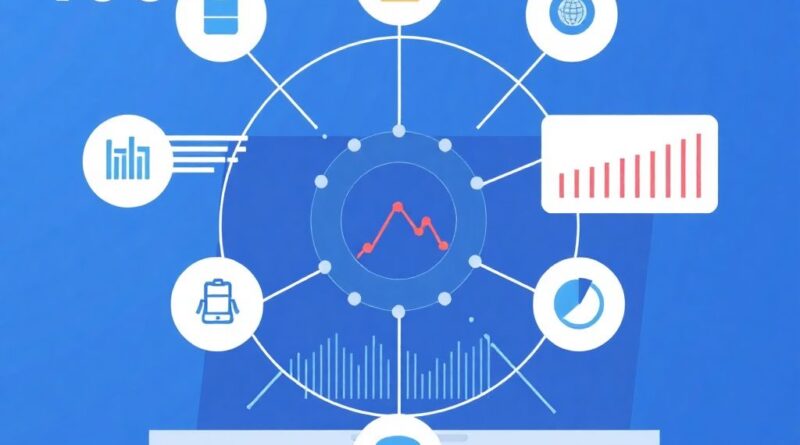Cybersecurity Measures
Cybersecurity Measures: Safeguarding Your Digital Frontier in 2025
Welcome to the digital age, where our lives are increasingly intertwined with the internet, and with that comes the ever-growing need for robust cybersecurity measures. As we delve into 2025, the threats have not only evolved in sophistication but also in frequency, making it paramount for individuals and businesses alike to fortify their digital defenses. Here’s a comprehensive rundown on the cybersecurity measures you should be adopting this year.
Understanding the Cybersecurity Landscape
Before we jump into the specifics, let’s take a moment to understand the current state of play. Cyber threats in 2025 are characterized by:
AI-Driven Attacks: Malicious actors are leveraging AI to automate and escalate their attacks, making them more precise and harder to detect.
Ransomware Evolution: More sophisticated and targeted, often aiming at critical infrastructures or high-value data.
IoT Vulnerabilities: With the proliferation of IoT devices, each connected gadget becomes a potential entry point for cybercriminals.
Supply Chain Risks: Attacks on third-party vendors can compromise an entire ecosystem of companies.
Essential Cybersecurity Measures
1. Multi-Factor Authentication (MFA):
Why it Matters: MFA adds layers of security by requiring more than one form of verification before granting access. It significantly reduces the risk of unauthorized access even if passwords are compromised.
Implementation: Use it for all sensitive accounts. Consider using authenticator apps or hardware tokens for an added layer over SMS-based systems, which are less secure.
2. Regular Software Updates and Patch Management:
Why it Matters: Software vulnerabilities are often the entry points for attackers. Regular updates patch these weaknesses.
Implementation: Automate updates where possible, especially for critical systems. Keep an inventory of all software to ensure nothing falls through the cracks.
3. Encryption Everywhere:
Why it Matters: Encrypting data, whether at rest or in transit, makes it unreadable to anyone without the key, protecting sensitive information from prying eyes.
Implementation: Use encryption for all data transfers, employ full-disk encryption for devices, and ensure cloud storage providers use encryption standards.
4. Zero Trust Architecture:
Why it Matters: Traditional perimeter-based security is outdated. Zero Trust assumes breach and verifies each user and device continuously.
Implementation: Implement strict identity verification, micro-segmentation of networks, and least privilege access controls.
5. AI and Machine Learning for Threat Detection:
Why it Matters: AI can analyze vast amounts of data to identify anomalies or patterns indicative of cyber threats, offering real-time threat detection.
Implementation: Deploy AI-driven security tools for monitoring network behavior, detecting phishing attempts, and automating responses to known threats.
6. Employee Training and Awareness:
Why it Matters: Human error remains a significant vulnerability. Educated employees are your first line of defense.
Implementation: Regular training sessions on recognizing phishing, safe internet practices, and the importance of cybersecurity hygiene.
7. Secure Remote Work Practices:
Why it Matters: With remote work here to stay, securing remote access is crucial.
Implementation: Use VPNs, secure remote desktop protocols, and ensure all remote connections are encrypted. Implement policies for secure home networks.
8. Incident Response Plan:
Why it Matters: No defense is foolproof. A well-prepared response can mitigate damage.
Implementation: Develop, test, and refine an incident response plan. Include clear steps for containment, eradication, recovery, and communication.
9. Regular Security Audits and Penetration Testing:
Why it Matters: To find and fix vulnerabilities proactively.
Implementation: Engage in both internal and third-party security audits. Penetration testing should mimic real-world attack scenarios to test your defenses.
10. IoT Security Management:
Why it Matters: The growth of IoT devices expands your attack surface.
Implementation: Segment IoT devices on your network, keep them updated, and where possible, use devices with built-in security features.
Adapting to the Future
The landscape of cybersecurity is one of constant change, driven by technological advancements and evolving threats. Here are some forward-thinking considerations:
Quantum-Safe Cryptography: As quantum computing approaches practicality, begin exploring cryptographic methods resistant to quantum attacks.
Privacy-Enhancing Technologies: With increasing privacy concerns, adopt solutions that protect user data without compromising utility.
Cybersecurity Mesh Architecture: This approach allows for more flexible, scalable security across distributed networks.
Cybersecurity in 2025 is not just about protecting against known threats but preparing for the unknown. By implementing these measures, you’re not just safeguarding your digital assets; you’re building resilience into your operations. Remember, cybersecurity is an ongoing process, demanding vigilance, adaptation, and education. Stay secure, stay vigilant, and let’s navigate the digital frontier with confidence.

